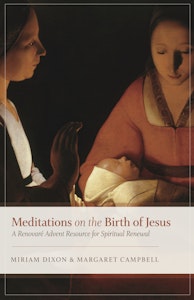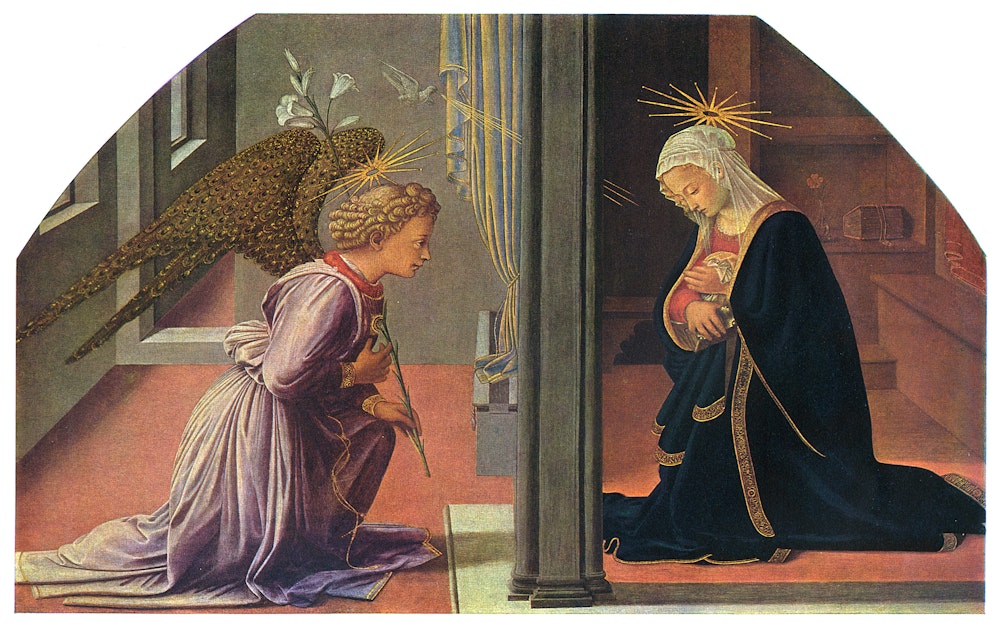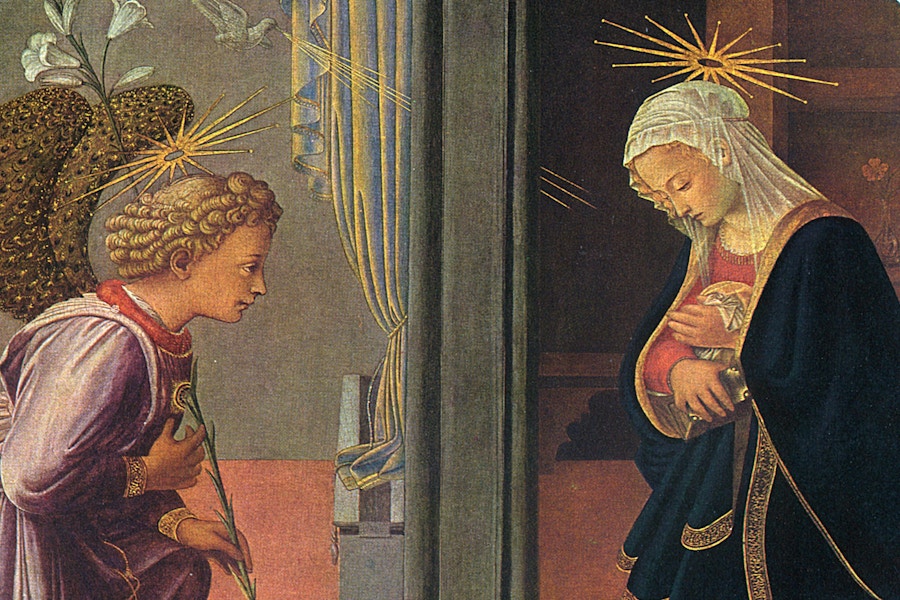 Excerpt from Meditations on the Birth of Jesus
Excerpt from Meditations on the Birth of Jesus
Here am I, the servant of the Lord. —Luke 1:38
Recommended passage for Lectio Divina: Luke 1:26 – 38.
Ask the Lord to help you enter the scene. Picture the place where Mary was and what she was doing when the angel Gabriel appeared.
What do you see? What do you smell? What do you hear?
Notice the change of expression on Mary’s face as she catches sight of the angelic messenger. How does he appear? Observe his expression as he engages Mary in conversation. Notice the movement of their bodies as the conversation unfolds.
Imagine yourself in the place of Mary. What goes through your mind as you receive the angel’s straightforward announcement of God’s intent? How does it strike you?
The “breaking in” of God does not have to be a frightening experience. It can be an awakening moment, a deepening moment.
Might this have been Mary’s experience?
The angel declares, “Greetings, favored one! The Lord is with you” (v. 28). This salutation tells us quite a bit about Mary. She dwells in the shadow of the Most High. For her, God is not far off. She knows who she is — a child of an infinitely good, wise, and powerful heavenly Father whom she desires to please.
Mary’s heroes are Abraham, Sarah, Isaac, Jacob, Moses, Miriam, David, Deborah. She loves the way God works through ordinary people. She dreams about Messiah’s arrival: What would he be like?
Mary is engaged to a godly man named Joseph, a descendant of the great King David. She eagerly anticipates the day when they will marry and start their own family in Nazareth.
These things are not far from her mind when the angel arrives. His sudden appearance is startling, his message more so. Without preamble, Gabriel announces that the time has come for God’s promise to be fulfilled. Mary will become pregnant and deliver the Son of the Most High!
Mary never imagined such a conversation taking place with anyone on earth, much less her. She was an appreciative spectator of divine events, not a participant.
“How can this be, since I am a virgin?”
Unlike Zechariah who asked, “How will I know that this is so?” (v. 18), Mary’s question to the angel comes from a pure heart. She desires understanding, not proof.
Gabriel replies that her virginity poses no problem whatsoever; the power of the Holy Spirit will overshadow her so that the child she bears will be called the Son of God.
It is a tall order for Mary to believe the news of this eternally unprecedented event. So the archangel bolsters her faith with a testimony — her barren relative Elizabeth is now pregnant in her old age, for “nothing will be impossible with God” (v. 37).
Nothing is impossible with God.
There is no time for Mary to consult with Joseph, her parents, or even Elizabeth. Gabriel awaits an answer. She must decide.
This is not the future she imagined. This wasn’t in the plans. The angel’s words were less request and more message — news of God’s better way. Still, like Zechariah she must choose how to receive it.
When God breaks in we have a choice: embrace or reject, believe or doubt. Either we abandon ourselves to God’s path, the steps of which are only revealed as each foot is lifted in obedience, or we cling to our own path with its illusion of certainty.
Mary chooses to embrace and believe: “Here am I, the servant of the Lord; let it be with me according to your word” (v. 38).
We can see why Mary enjoyed God’s favor. Favor consists in our close conformity with the order established by God; we accept God’s choice for us.
It is hard to believe that God’s redemption plan depended upon the obedient cooperation of a teenage girl. Yet it did. And in the course of ordinary events, souls still today are called by God to a life of perfect submission where we have a role in God’s ongoing work. It seems risky, but it is God’s way.
On the surface, there is little about Mary that would recommend her. She lived a hidden, ordinary life. Her exalted status underscored in Gabriel’s greeting only becomes visible in her complete abandonment to the will and purpose of God.
When Mary visits Elizabeth (vv. 39 – 56), she is filled with wonder and gratitude for being included in God’s eternal plan of salvation. She has little clarity about what this actually entails, but she is certain that God knows. And for Mary, that is enough.
Visio Divina
Spend a period of time in personal reflection on the artwork below. You may find these steps of Visio Divina helpful:
- Request. Ask God to guide your thoughts and impressions through the Holy Spirit.
- Gaze. Take in the painting. Notice its structure, the placement of the people and objects in the artwork, the shape and form, the use of light and shadow, the empty spaces. What catches your attention?
- Reflect on what you see. Pay attention to your impressions, thoughts, and feelings. How does the image deepen your understanding of the text?
- Respond and Receive. Carry the details of the image with you through the coming week in the way you might carry a word from Lectio Divina with you. You may find that God is inviting you to pray as the appropriate response to what he has shown you. What is God’s invitation? Receive what God has shown you and rest in a posture of obedience and devotion.

The Italian Renaissance artist Fra Filippo Lippi painted The Annunciation in the mid fifteenth century. Fra Lippi was a Carmelite friar who lived a complicated, troubled life but painted devotional subjects with understanding and clarity. The viewer is drawn into the intimate scene by the semicircular structure of the painting. The use of perspective communicates that this is a real event. Visual simplicity is achieved by placing the two kneeling figures opposite one another. On the right Mary is holding a book, symbolizing the Word of God become flesh. Gabriel, easily identified by his golden wings, is holding a lily, a symbol of purity. The diagonal rays of light extend from the dove toward Mary as she listens humbly as Gabriel declares, “Greetings, favored one! The Lord is with you.”
Going Deeper
- Look at the picture of Mary’s conversation with Gabriel. What do you notice? How does the image illuminate and deepen your understanding of the biblical text?
- Has there been a time when you experienced the “in-breaking” of God? What has been the lasting impact of your response?
- Do you see yourself as having a part in God’s unfolding plan? What might it mean for you to say, “Here am I, the servant of the Lord; let it be with me according to your word”?
- At the end of the day, make a list of times you felt God’s presence. You may be surprised at how many times God broke into your life today.
Excerpted from the Renovaré resource Meditations on the Birth of Jesus, copyright 2019 Miriam Dixon and Margaret Campbell. Download it free or purchase physical copies.
Text First Published December 2019 · Last Featured on Renovare.org December 2023



